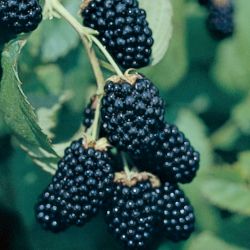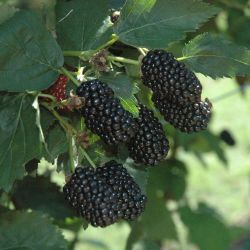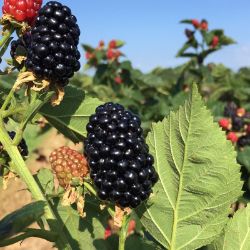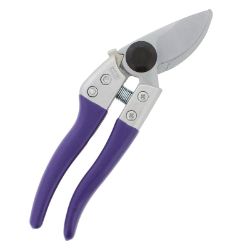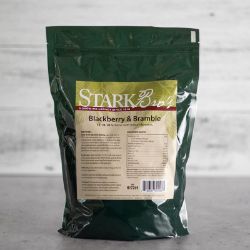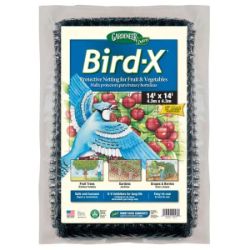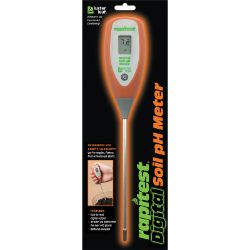Pest & Disease Control for Blackberry Plants
Every plant has the future potential for disease and insect damage. Factors such as location and weather will play a part in which issues your plants encounters. If available, disease-resistant varieties are the best option for easy care; and for all types of plants, proper maintenance (such as watering, pruning, spraying, weeding, and cleanup) can help keep most insects and diseases at bay.
NOTE: This is part 7 in a series of 11 articles. For a complete background on how to grow blackberry plants, we recommend starting from the beginning.
Crown Gall
Plants appear stunted and slow growing; leaves may be reduced in size, little or no fruit. If plant is dead, inspect roots for hard, woody tumors. Note: many things can cause stunted plants.
Control
- Consult County Extension Agent
Aphids
They are the size of a pinhead and vary in color depending on the species. Cluster on stems and under leaves, sucking plant juices. Leaves then curl, thicken, yellow and die. Produce large amounts of a liquid waste called “honeydew”. Aphid sticky residue becomes a growth media for sooty mold.
Natural Control
- Monterey Fruit Tree Spray Plus
Chemical Control
- GardenTech® Sevin® Concentrate Bug Killer
Cane Borer
Adult is a long-horned beetle. Larvae indicated by sawdust.
Natural Control
- Remove and destroy infected canes.
Other Control Options
- Consult County Extension Agent
Cane Blight
Enters through wounds made by insects or mechanically. Cause large brown dead areas (cankers). Often first noticed when leaves wilt and wither. Cut back to below cankers; disinfect shears between cuts with 1 part bleach and 10 parts water. Dispose of pruning.
Natural Control
- Monterey Fruit Tree Spray Plus
Spot Anthracnose
It is most common on Black raspberry. Reddish-brown sunken spots with purple margins and light gray centers appear on young shoots. Grow together into cankers. Leaves may drop early. Fruit may dry up. Over winters in lesions on old canes. Proper pruning can help control. Always remove and burn old fruiting canes after harvest.
Control
- Consult County Extension Agent
Orange Rust
Not common on Red raspberry but serious on all others, especially Blackberries. Underside of leaves covered with orange-yellow spores. Remove infected plants.
Natural Control
- Monterey Fruit Tree Spray Plus
Fruit Rot
Appears as gray, hairy mold on decays blossoms, green and ripening fruits and harvested fruits.
Control
- Contact County Extension Agent
Powdery Mildew
Whitish-gray powdery mold or felt like patches on buds, young leaves and twigs. Leaves may crinkle and curl upward. Over winters in fallen leaves.
Natural Control
- Clean up fallen leaves and other debris.
- Monterey Fruit Tree Spray Plus
Fruitworm (Sawfly)
Adult is yellow to brown sawfly beetle, 1/4” long. Larvae are brown and white, 1/8” long. Adults make slits in flower buds and larvae feed on berries.
Natural Control
- Hi-Yield® Vegetable & Ornamental Insect Control
Chemical Control
- GardenTech® Sevin® Concentrate Bug Killer
Mites
Pinpoint size, many different colors. Found on undersides of leaves. Severe infestations have some silken webbing. Sap feeding causes bronzing of leaves.
Natural Control
- Monterey Fruit Tree Spray Plus
Chemical Control
- GardenTech® Sevin® Concentrate Bug Killer
Japanese Beetle
Adult is metallic green beetle, which skeletonizes leaves. Larvae are a grub, which feeds on turf roots. Check turf product labels for timing of control of grubs. This is more of this problem is east of the Mississippi River.
Natural Control
- Traps
Chemical Control
- GardenTech® Sevin® Concentrate Bug Killer
Leafroller
Pale yellow or ‘dirty’ green worms. Leaves are rolled and webbed together where insects feed. Eventually becomes skeletonized.
Natural Control
- Hi-Yield® Vegetable & Ornamental Insect Control
- Natural Guard® Caterpillar Killer Spray w/BT
Chemical Control
- GardenTech® Sevin® Concentrate Bug Killer
Rose Chafer
Beetle has 1/2” long, tan wings with reddish-brown edges. Long, thin hairy legs. Skeletonizes leaves and flowers. Present in large quantities in June and July. Worst on sandy sites near grassy areas.
Chemical Control
- GardenTech® Sevin® Concentrate Bug Killer
Thrips
Tiny, slender, fringed wing insects ranging from 1/25 to 1/8” long. Nymphs are pale yellow and highly active and adults are usually black or yellow-brown, but may have red, black or white markings. Feed on large variety of plants by puncturing them and sucking up the contents.
Natural Control
- Monterey Fruit Tree Spray Plus
- Hi-Yield® Vegetable & Ornamental Insect Control
Leaf Curl
Leaves thicken and curl much like they have aphids. Spread by insects usually from June until plants ready to cultivate. This is caused by a virus and spread partially by Raspberry Aphid, which are hard to control.
Natural Control
- Remove and burn dead canes and remove wild berries from the area.
Other Control Options
- Consult County Extension Agent
Mosiac
Leaves will thicken and curl, display ‘mottled’ color. There will be dark green areas and bright green areas on same leaf. Caused by a virus and spread partially by Raspberry Aphid which are hard to control.
Natural Control
- Remove and burn dead canes and remove wild berries from the area.
Other Control Options
- Consult County Extension Agent














